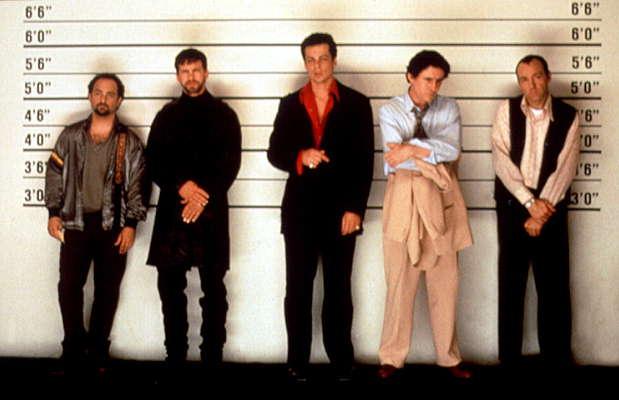· 15 min read
How To Create User Personas As Unique As Your Audience
Jacqueline Zenn
Content Crafter at GameAnalytics
Do you sometimes wish that you could get to know every one of your players and the members of your target audience personally? Know their playing habits, what they like and don’t like about your game and online gaming in general, any similar interests and related activities, demographics and location, and whatever other tidbits that might have you improve your game’s user experience for them.
While fulfilling that exact wish is pretty unlikely – especially with a larger audience – you can put a type of face to those data points by creating user personas that essentially characterize each group or segment of your audience. In fact, you can even name them, assign images to them for better visualization, or further flesh out their backgrounds to make them more “real” in your mind.
Why You Should Develop User Personas…
Personas are meant to help a marketing team develop a mental picture or a representations of their main user segments. Accordingly, creating and referencing personas is a pretty popular activity among the more corporate marketing and advertising types, especially those who work for major brands or agencies.
Just think about every major ad campaign that you’ve encountered. Most of those were created and targeted with the help of personas built with lots of market research and data analysis. However, you don’t have to work for a big company or have a huge marketing budget to develop effective user personas that will become invaluable to you and your marketing team. In fact, all you need is some dedication to research, solid analytics, and the ability to get creative and put yourself in the mind of your users.
Why Is Creating Personas A Good Idea?
For smaller games, projects, or budgets, this whole process might seem like a waste of time. After all, you have enough to do without making up some fake people who supposedly resemble your players.
However, creating personas puts a “face” on your target audience, which then informs the whole process. It will make everything from the initial storyboarding and wireframing to creating the copy in your app store descriptions more cohesive, streamlined, and smooth. Plus it’ll give you something to talk about or refer to in your analytics presentations and reports – a hero for your analytics narrative, so to speak.
In addition, your personas can help you remember that you’re not just creating this game for yourself; even though you might have fallen in love with your creation or started your project as an attempt to design your own perfect game, if you’re marketing it or selling it, it needs to appeal to people beyond your own peer group. So how do you create personas, exactly?

How To Get Started Creating Unique Personas For Your Game
By now you’re probably sold on the idea of creating personas themselves, but getting started on the process may seem easier said than done. So how do you create personas, exactly?
Collect And Condense The Data.
An effective collection of personas already exists in the data that you’ve gathered with your analytics and marketing efforts, you just have to connect the dots and put it together.
Some things are obvious, like geographic location, ages and genders of your users, and even habits like session time and the time of day they play. Their in-game spending habits are important as well, along with their in-game behavior in regard to taking risks or speeding through a game (the hare versus the tortoise), preferring to grind out and quest (slow and steady wins the race) Some others might be less obvious like whether they play socially with friends or they are more of a loner (if your game offers those options).
You can start to put together clues about their personality and mindset from the way they approach the challenges in your game, as well as how they interact with other characters or players. How they move through and engage with your game’s user experience can give you some insight into their mindset. For instance, do they slowly explore the game one level at a time and draw out the experience, or do they push through quickly, wanting to complete a goal? Do they like multi-player games or solo quests? Do they spend time grinding it out or do they use cheat codes? All of their in-game behavior can help you extrapolate what their real world personality is like.
If your game is in an app store, you can also what else people who’ve purchased your game have downloaded, giving you more insights into their personality and world outside of your game.
Get Outside Of The Game For Your Research.
This starts by digging into your analytics and applying what you already know about your target audience in regard to their demographics, location, interests, and online behaviors.
This can be especially revelatory if you can collect data from their social media accounts – Facebook in particular, since we all know that Facebook knows everything about its users (we’re exaggerating…slightly). Even if you don’t have this, you should set up Google alerts to keep an eye out for mentions of your game online. This is excellent for feedback, customer service, and R&D along with getting to know your users outside of the game.
Brainstorm With Your Team
Drawing insights from your game’s analytics and any other data that you possess to create user personas is often best accomplished as a group exercise. After all, personifying your audience segments is both an art and a science, and the creative “art” aspects of it tend to be best served by input from all the key stakeholders.
This phase might give you all sorts of ideas for personas and segments based on your perception of your audience – don’t be afraid to get weird. You can refine your personas and narrow them down or sort them into groups in the next phase of this activity. When you’re brainstorming, no concept is too weird, no connection too tenuous, and no thought too crazy to bring up.
The Key Questions To Ask During The Persona Development Process
There are some key questions to ask yourself during this all-important phase of persona creation, such as…
- What the goals of this particular user/persona/segment, and how they are aligned with the goals or outcome of the game?
- Why does this user/persona/segment play this game?
- What is their age, location, gender, professional background? What are their other hobbies? What type of non-gaming entertainment are they drawn to?
- What social media platforms and other online communities does this user/persona/audience segment use and frequent?
- What type of device do they use?
- How much do they spend gaming or on the web in general?
- What times of the day/days of the week do they play the game? How often?
- What are they motivated by and what are they are looking to get out of playing your game (or gaming in general)?
This is far from an exhaustive list (and there are plenty of other examples online), but it can definitely get your team started on the path towards discovering what kind of people your users are and therefore how you can better market towards them and communicate with them more effectively.
Persona Refinement: Narrowing Things Down
Now that you’ve got the key questions answered and the primary data sorted, it’s time to refine all your thoughts and ideas and sort them into a group of about three to five personas.
Hopefully, there will be some obvious commonalities so you can start by grouping similar traits, characteristics and data points together in a logical fashion until you get three or five collections of behaviors or descriptives that could each theoretically make up a person that fits into one of your core audience segments.
Keep in mind that all your users have gaming of some sort in common there will likely be some overlap, however too much in common means you that should probably consider combining the analogous personas into one. Think of it in regard to similarity in friend groups versus co-workers or somewhat distant siblings – your personas can and should be acquaintances, colleagues, or even relatives like cousins or siblings, but not identical twins.
Making Your Personas Come To Life
This might be the most fun part of the whole process of creating your user personas! You get to name them (in order to make it easier to reference them later) and perhaps choose an image to represent them.
This where you can inject a little humor into your marketing and analytics if you’d like, although note that getting too quirky may make it tough to get the message across to people outside your team later, and that ease of communication is often the whole point of creating personas in the first place.
Checklist: The Key Elements Of A Persona
While your personas should be as unique as your users, a proper persona has certain elements like demographics (age, gender, location, ethnicity, family status), interests and hobbies, and often career or job information. Their social and technological backgrounds and environments are important too, and it’s definitely helpful to find some images that provide a visual representation of your personas.
You should also describe their motivation for downloading the game, along with their larger life goals. Feel free to get a little aspirational or even literary here – you want your personas to feel like real people that you have an investment in. After all, they are your audience! Everything from what they eat for breakfast to why they downloaded your game matters.
Their reasons for choosing a particular type of game are also important in this instance. For example, do they want a quick distraction during the workday, something to do on a commute (so an everyday thing) or a long journey while on holiday (more of a one-off), or a game that they get lost in and play on a daily or regularly scheduled basis. Or something in between! Here are the key elements that a proper persona should include…
- Demographics – age, gender, family status
- Social background – career, income, education
- Technology and devices used
- Motivation for gaming
- Other non-gaming interests
- Goals and aspirations
- A picture or visual representation
Actionability Is Essential
This might be the most important part of the whole exercise! You can be as clever as you like when creating your various personas, as long as you make them somewhat actionable and capable of informing game creation and promotion.
This is why your personas should include some clever background details but also what type of technology each theoretical individual uses, the types of content they consume online, the social networks they participate in, their other favorite games and media, and anything else that might make an impact on the choices of the design, development, and marketing teams.
So Is Uncovering Their Hopes And Dreams
Once you get the key elements organized, you can flesh things out and add some unique details based on their in-game behaviors, e.g. “Derek plays casually every day on his morning and evening commutes, with more involved game-play in the evening when he’s all caught up on email for the day. This gaming time is his reward for a hard day at the office and lets him zone out a little. He enjoys spending time in the game’s universe, and feels like he can identify a bit with the Sisyphean task of the main characters as he goes to the office every weekday and it seems like nothing changes.”
Naturally, you’ll probably have a couple different sets of motivations or goals for your users, so each persona will have their unique characteristics based on those. Finally, each persona should have a problem that your game (hopefully) solves, whether that’s giving them something to do during idle moments or letting them escape into another world for a while, or anything in between.
Example Personas
Perhaps the best way to learn about user personas is to look at some examples and see how they might apply to your game or product.
Derek – The Lifestyle Player

Derek is the aforementioned office drone who gets a bit of a bright spot or pick-me-up from playing your game during his commute or perhaps even sneaking a bit of playing time in during the slow periods at the office. He’s in his early thirties, works for a larger company in a supporting or middle management type of role, and wants to be a CTO or IT director someday. Or maybe a CMO of a cool app or video game company. He’s single but actively dating, and doesn’t tend to share his love of gaming with the world too much. He usually sticks to one game at a time.
Samantha – The Aesthetic Player

Samantha loves all things rainbow colored and cute, so naturally she’s a fan of a somewhat easy to play and intuitive game that fits in with her aesthetic. She works retail or at a beauty salon but wants to have her own boutique someday. She’s a young twenty-something with a boyfriend but doesn’t see forever with him – but that’s okay! She plays during breaks at work and occasionally while she’s binge-watching something on Netflix too. Her dream vacation is to Japan, Hong Kong, and Korea for the shopping. She loves talking about her favorite games and actively participates in various communities centered around online and mobile gaming.
Charlotte – The Unexpected Player

Charlotte is a forty-something mother of three and a businesswoman – far from your typical gamer. But her favorite games are her secret moments of escape that she can carve out during a busy day; she was introduced to them by her kids who are more avid gamers. She’d never identify as a gamer and doesn’t really even talk about her gaming with others, but privately plays almost as much as her kids. She has the resources to make plenty of guilt-free in-game purchases as well.
Toby – The Devoted Player

He’s a classic nerd and spends plenty of time and money on video games – you could safely say they are one of his main hobbies and perhaps the focal point of his life, and he’d totally agree. He has dozens of games downloaded on his computer and mobile devices, and he’s pretty much always playing one or the other. He’s a student but naturally aspires to work in the tech industry and perhaps game development himself. He’s probably already sketched out the plot and begun to design and perhaps program his first titles. He might already know how to code as well. Toby’s not just a gamer, he’s interested in the industry as a whole.
How Personas Help You Get The Whole Picture
While the process is a fun and illuminating creative exercise, the real value of creating personas lies in their ability to help you visualize what your users look like and get inside their heads. And that will help improve any updates, marketing campaigns, or even follow-up games that are even better suited for your target audience. As a bonus, personas can help you understand and make better use of the data in your game’s analytics by putting user behaviors into real world contexts. All this will give you more confidence when you are making decisions about changes and updates to your game, how to promote it, and any sequels or new games.
What’s more, personas give all the the other stakeholders a clearer picture of your game’s audience. After all, if you’re the main developer, marketer, or anyone else who’s hanging with the data all day, you’re probably pretty close to the target audience – you know how they behave, how they think, and how they interact in the game and probably even what else they do online. However, anyone who’s not as involved with the project as you needs a quick way of understanding the motivations and goals, hopes, and dreams of the target audience segments – hence the value of creating personas.
So now it’s time to get started. Who’s your game’s audience and what kind of personas do you have? How would you describe them and what are their motivations for playing your game? What are they trying to achieve? And perhaps most importantly, how do you and your team use your personas to improve your game? Building great games starts with understanding your player’s behavior – and developing detailed personas is what takes that understanding to the next level.